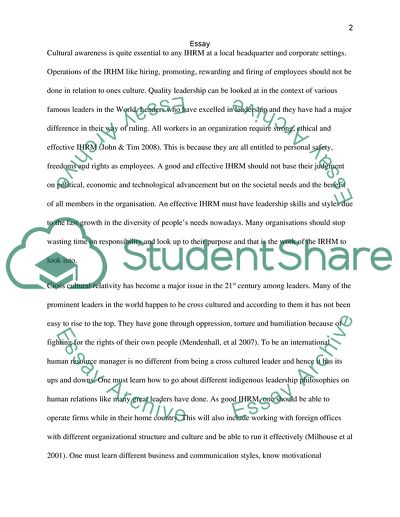Cite this document
(Good Leaders Are Cross-Cultural Leaders Essay Example | Topics and Well Written Essays - 2750 words, n.d.)
Good Leaders Are Cross-Cultural Leaders Essay Example | Topics and Well Written Essays - 2750 words. Retrieved from https://studentshare.org/human-resources/1736484-interantional-hrm
Good Leaders Are Cross-Cultural Leaders Essay Example | Topics and Well Written Essays - 2750 words. Retrieved from https://studentshare.org/human-resources/1736484-interantional-hrm
(Good Leaders Are Cross-Cultural Leaders Essay Example | Topics and Well Written Essays - 2750 Words)
Good Leaders Are Cross-Cultural Leaders Essay Example | Topics and Well Written Essays - 2750 Words. https://studentshare.org/human-resources/1736484-interantional-hrm.
Good Leaders Are Cross-Cultural Leaders Essay Example | Topics and Well Written Essays - 2750 Words. https://studentshare.org/human-resources/1736484-interantional-hrm.
“Good Leaders Are Cross-Cultural Leaders Essay Example | Topics and Well Written Essays - 2750 Words”, n.d. https://studentshare.org/human-resources/1736484-interantional-hrm.


